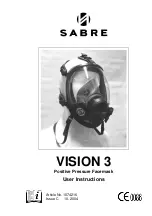
ALL-TEST
PRO
®
31 User Manual
©2011, ALL-TEST
Pro,
LLC
www.alltestpro.com
rev 2011-11F
32
these frequencies then it is generally a good winding (follow the procedure for changing the test
frequency).
Example 1. If the test results remain similar, meaning that the actual readings may change by a few
digits, but the difference between the readings remains the same, then the winding is considered good; In
Table 4 the test spread of the Fi is 3 units, 66 to 69, after changing. At the test frequency, the results in
Table 5 show the Fi values changed from 70 to 73. The spread is still 3 units. This is generally a “good”
winding
Table 4: Sample Test Results
T1-T2 T1-T3 T2-T3
Fi
66
67
69
I/F
-44
-44
-45
Table 5: Adjusted Frequency Sample, Good
T1-T2 T1-T3 T2-T3
Fi
70
71
73
I/F
-44
-44
-45
Example 2. If the unbalances of Fi and/or I/F at the other test frequency increase then the winding is
most likely in poor condition. In table 4, the spread of Fi is 3 units, 66 to 69, after changing. At the test
frequency, see Table 6, the Fi values changed from 70 to 75. Then the spread has increased to 5 units.
This winding should be considered to be in poor condition.
Table 6: Adjusted Frequency Sample, Bad
T1-T2 T1-T3 T2-T3
Fi
70
71
75
I/F
-45
-45
-47
VIII. DC Motor Testing
Electrical testing of DC motors is a challenge, and the ALL-TEST
PRO®
31 can provide some limited
troubleshooting capabilities for them. However, for a more detailed and thorough analysis, we suggest
you use the ALL-TEST IV PRO™. One of the key issues is the inability to compare like coils. However,
it is possible to do some limited comparisons of coils, (if the information is available). Trending changes
over time is also possible, as well as measuring & trending insulation resistance to ground of both the
field and the armature windings.







































